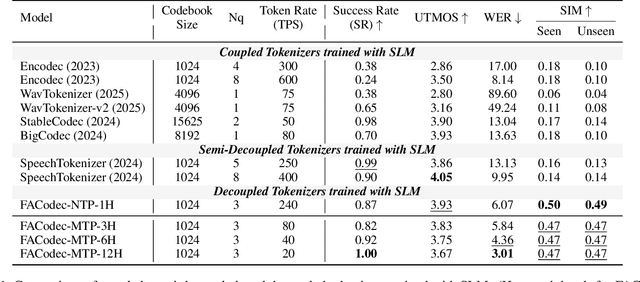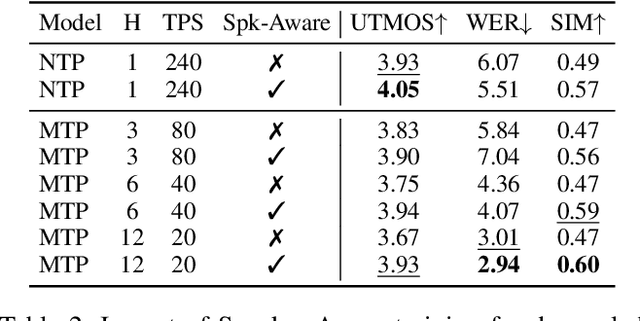Shuo Li
Rethinking Reference Trajectories in Agile Drone Racing: A Unified Reference-Free Model-Based Controller via MPPI
Sep 18, 2025Abstract:While model-based controllers have demonstrated remarkable performance in autonomous drone racing, their performance is often constrained by the reliance on pre-computed reference trajectories. Conventional approaches, such as trajectory tracking, demand a dynamically feasible, full-state reference, whereas contouring control relaxes this requirement to a geometric path but still necessitates a reference. Recent advancements in reinforcement learning (RL) have revealed that many model-based controllers optimize surrogate objectives, such as trajectory tracking, rather than the primary racing goal of directly maximizing progress through gates. Inspired by these findings, this work introduces a reference-free method for time-optimal racing by incorporating this gate progress objective, derived from RL reward shaping, directly into the Model Predictive Path Integral (MPPI) formulation. The sampling-based nature of MPPI makes it uniquely capable of optimizing the discontinuous and non-differentiable objective in real-time. We also establish a unified framework that leverages MPPI to systematically and fairly compare three distinct objective functions with a consistent dynamics model and parameter set: classical trajectory tracking, contouring control, and the proposed gate progress objective. We compare the performance of these three objectives when solved via both MPPI and a traditional gradient-based solver. Our results demonstrate that the proposed reference-free approach achieves competitive racing performance, rivaling or exceeding reference-based methods. Videos are available at https://zhaofangguo.github.io/racing_mppi/
E-BayesSAM: Efficient Bayesian Adaptation of SAM with Self-Optimizing KAN-Based Interpretation for Uncertainty-Aware Ultrasonic Segmentation
Aug 24, 2025Abstract:Although the Segment Anything Model (SAM) has advanced medical image segmentation, its Bayesian adaptation for uncertainty-aware segmentation remains hindered by three key issues: (1) instability in Bayesian fine-tuning of large pre-trained SAMs; (2) high computation cost due to SAM's massive parameters; (3) SAM's black-box design limits interpretability. To overcome these, we propose E-BayesSAM, an efficient framework combining Token-wise Variational Bayesian Inference (T-VBI) for efficienty Bayesian adaptation and Self-Optimizing Kolmogorov-Arnold Network (SO-KAN) for improving interpretability. T-VBI innovatively reinterprets SAM's output tokens as dynamic probabilistic weights and reparameterizes them as latent variables without auxiliary training, enabling training-free VBI for uncertainty estimation. SO-KAN improves token prediction with learnable spline activations via self-supervised learning, providing insight to prune redundant tokens to boost efficiency and accuracy. Experiments on five ultrasound datasets demonstrated that E-BayesSAM achieves: (i) real-time inference (0.03s/image), (ii) superior segmentation accuracy (average DSC: Pruned E-BayesSAM's 89.0\% vs. E-BayesSAM's 88.0% vs. MedSAM's 88.3%), and (iii) identification of four critical tokens governing SAM's decisions. By unifying efficiency, reliability, and interpretability, E-BayesSAM bridges SAM's versatility with clinical needs, advancing deployment in safety-critical medical applications. The source code is available at https://github.com/mp31192/E-BayesSAM.
Information Bottleneck-based Causal Attention for Multi-label Medical Image Recognition
Aug 11, 2025Abstract:Multi-label classification (MLC) of medical images aims to identify multiple diseases and holds significant clinical potential. A critical step is to learn class-specific features for accurate diagnosis and improved interpretability effectively. However, current works focus primarily on causal attention to learn class-specific features, yet they struggle to interpret the true cause due to the inadvertent attention to class-irrelevant features. To address this challenge, we propose a new structural causal model (SCM) that treats class-specific attention as a mixture of causal, spurious, and noisy factors, and a novel Information Bottleneck-based Causal Attention (IBCA) that is capable of learning the discriminative class-specific attention for MLC of medical images. Specifically, we propose learning Gaussian mixture multi-label spatial attention to filter out class-irrelevant information and capture each class-specific attention pattern. Then a contrastive enhancement-based causal intervention is proposed to gradually mitigate the spurious attention and reduce noise information by aligning multi-head attention with the Gaussian mixture multi-label spatial. Quantitative and ablation results on Endo and MuReD show that IBCA outperforms all methods. Compared to the second-best results for each metric, IBCA achieves improvements of 6.35\% in CR, 7.72\% in OR, and 5.02\% in mAP for MuReD, 1.47\% in CR, and 1.65\% in CF1, and 1.42\% in mAP for Endo.
Vector Contrastive Learning For Pixel-Wise Pretraining In Medical Vision
Jun 25, 2025Abstract:Contrastive learning (CL) has become a cornerstone of self-supervised pretraining (SSP) in foundation models, however, extending CL to pixel-wise representation, crucial for medical vision, remains an open problem. Standard CL formulates SSP as a binary optimization problem (binary CL) where the excessive pursuit of feature dispersion leads to an over-dispersion problem, breaking pixel-wise feature correlation thus disrupting the intra-class distribution. Our vector CL reformulates CL as a vector regression problem, enabling dispersion quantification in pixel-wise pretraining via modeling feature distances in regressing displacement vectors. To implement this novel paradigm, we propose the COntrast in VEctor Regression (COVER) framework. COVER establishes an extendable vector-based self-learning, enforces a consistent optimization flow from vector regression to distance modeling, and leverages a vector pyramid architecture for granularity adaptation, thus preserving pixel-wise feature correlations in SSP. Extensive experiments across 8 tasks, spanning 2 dimensions and 4 modalities, show that COVER significantly improves pixel-wise SSP, advancing generalizable medical visual foundation models.
Speech-Language Models with Decoupled Tokenizers and Multi-Token Prediction
Jun 14, 2025



Abstract:Speech-language models (SLMs) offer a promising path toward unifying speech and text understanding and generation. However, challenges remain in achieving effective cross-modal alignment and high-quality speech generation. In this work, we systematically investigate the impact of key components (i.e., speech tokenizers, speech heads, and speaker modeling) on the performance of LLM-centric SLMs. We compare coupled, semi-decoupled, and fully decoupled speech tokenizers under a fair SLM framework and find that decoupled tokenization significantly improves alignment and synthesis quality. To address the information density mismatch between speech and text, we introduce multi-token prediction (MTP) into SLMs, enabling each hidden state to decode multiple speech tokens. This leads to up to 12$\times$ faster decoding and a substantial drop in word error rate (from 6.07 to 3.01). Furthermore, we propose a speaker-aware generation paradigm and introduce RoleTriviaQA, a large-scale role-playing knowledge QA benchmark with diverse speaker identities. Experiments demonstrate that our methods enhance both knowledge understanding and speaker consistency.
A Fast, Reliable, and Secure Programming Language for LLM Agents with Code Actions
Jun 13, 2025Abstract:Modern large language models (LLMs) are often deployed as agents, calling external tools adaptively to solve tasks. Rather than directly calling tools, it can be more effective for LLMs to write code to perform the tool calls, enabling them to automatically generate complex control flow such as conditionals and loops. Such code actions are typically provided as Python code, since LLMs are quite proficient at it; however, Python may not be the ideal language due to limited built-in support for performance, security, and reliability. We propose a novel programming language for code actions, called Quasar, which has several benefits: (1) automated parallelization to improve performance, (2) uncertainty quantification to improve reliability and mitigate hallucinations, and (3) security features enabling the user to validate actions. LLMs can write code in a subset of Python, which is automatically transpiled to Quasar. We evaluate our approach on the ViperGPT visual question answering agent, applied to the GQA dataset, demonstrating that LLMs with Quasar actions instead of Python actions retain strong performance, while reducing execution time when possible by 42%, improving security by reducing user approval interactions when possible by 52%, and improving reliability by applying conformal prediction to achieve a desired target coverage level.
Alignment of large language models with constrained learning
May 26, 2025Abstract:We study the problem of computing an optimal large language model (LLM) policy for a constrained alignment problem, where the goal is to maximize a primary reward objective while satisfying constraints on secondary utilities. Despite the popularity of Lagrangian-based LLM policy search in constrained alignment, iterative primal-dual methods often fail to converge, and non-iterative dual-based methods do not achieve optimality in the LLM parameter space. To address these challenges, we employ Lagrangian duality to develop an iterative dual-based alignment method that alternates between updating the LLM policy via Lagrangian maximization and updating the dual variable via dual descent. In theory, we characterize the primal-dual gap between the primal value in the distribution space and the dual value in the LLM parameter space. We further quantify the optimality gap of the learned LLM policies at near-optimal dual variables with respect to both the objective and the constraint functions. These results prove that dual-based alignment methods can find an optimal constrained LLM policy, up to an LLM parametrization gap. We demonstrate the effectiveness and merits of our approach through extensive experiments conducted on the PKU-SafeRLHF dataset.
Effective Reinforcement Learning for Reasoning in Language Models
May 22, 2025Abstract:Reinforcement learning (RL) has emerged as a promising strategy for improving the reasoning capabilities of language models (LMs) in domains such as mathematics and coding. However, most modern RL algorithms were designed to target robotics applications, which differ significantly from LM reasoning. We analyze RL algorithm design decisions for LM reasoning, for both accuracy and computational efficiency, focusing on relatively small models due to computational constraints. Our findings are: (i) on-policy RL significantly outperforms supervised fine-tuning (SFT), (ii) PPO-based off-policy updates increase accuracy instead of reduce variance, and (iii) removing KL divergence can lead to more concise generations and higher accuracy. Furthermore, we find that a key bottleneck to computational efficiency is that the optimal batch sizes for inference and backpropagation are different. We propose a novel algorithm, DASH, that performs preemptive sampling (i.e., sample a large batch and accumulate gradient updates in small increments), and gradient filtering (i.e., drop samples with small advantage estimates). We show that DASH reduces training time by 83% compared to a standard implementation of GRPO without sacrificing accuracy. Our findings provide valuable insights on designing effective RL algorithms for LM reasoning.
Flash-VL 2B: Optimizing Vision-Language Model Performance for Ultra-Low Latency and High Throughput
May 14, 2025Abstract:In this paper, we introduce Flash-VL 2B, a novel approach to optimizing Vision-Language Models (VLMs) for real-time applications, targeting ultra-low latency and high throughput without sacrificing accuracy. Leveraging advanced architectural enhancements and efficient computational strategies, Flash-VL 2B is designed to maximize throughput by reducing processing time while maintaining competitive performance across multiple vision-language benchmarks. Our approach includes tailored architectural choices, token compression mechanisms, data curation, training schemes, and a novel image processing technique called implicit semantic stitching that effectively balances computational load and model performance. Through extensive evaluations on 11 standard VLM benchmarks, we demonstrate that Flash-VL 2B achieves state-of-the-art results in both speed and accuracy, making it a promising solution for deployment in resource-constrained environments and large-scale real-time applications.
Effective Length Extrapolation via Dimension-Wise Positional Embeddings Manipulation
Apr 26, 2025Abstract:Large Language Models (LLMs) often struggle to process and generate coherent context when the number of input tokens exceeds the pre-trained length. Recent advancements in long-context extension have significantly expanded the context window of LLMs but require expensive overhead to train the large-scale models with longer context. In this work, we propose Dimension-Wise Positional Embeddings Manipulation (DPE), a training-free framework to extrapolate the context window of LLMs by diving into RoPE's different hidden dimensions. Instead of manipulating all dimensions equally, DPE detects the effective length for every dimension and finds the key dimensions for context extension. We reuse the original position indices with their embeddings from the pre-trained model and manipulate the key dimensions' position indices to their most effective lengths. In this way, DPE adjusts the pre-trained models with minimal modifications while ensuring that each dimension reaches its optimal state for extrapolation. DPE significantly surpasses well-known baselines such as YaRN and Self-Extend. DPE enables Llama3-8k 8B to support context windows of 128k tokens without continual training and integrates seamlessly with Flash Attention 2. In addition to its impressive extrapolation capability, DPE also dramatically improves the models' performance within training length, such as Llama3.1 70B, by over 18 points on popular long-context benchmarks RULER. When compared with commercial models, Llama 3.1 70B with DPE even achieves better performance than GPT-4-128K.
 Add to Chrome
Add to Chrome Add to Firefox
Add to Firefox Add to Edge
Add to Edge